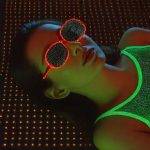
In the rapidly advancing world of technology, one of the most exhilarating frontiers is the development of quasi-physical simulators. These simulators represent a blend of virtual and physical elements to create environments where complex tasks can be practiced and mastered. The focus is on dexterous robot hands, which mimic human movements to perform intricate tasks, from handling delicate objects to using tools effectively. This technology allows robots to learn and adapt to various scenarios without the risks and costs associated with real-world training.
Bridging the Gap Between Digital and Physical
Quasi-physical simulators excel in their ability to bridge the gap between digital simulations and physical reality. These platforms adjust physical laws in controlled ways, making it easier for robots to learn tasks before applying them in real situations. This unique approach enables continuous refinement of robots’ skills in a safe, scalable, and cost-effective manner, paving the way for broader applications in industries where precision and adaptability are crucial.
From Simulation to Real World Mastery
The journey from simulated environments to real-world application is intricate and fascinating. Initially, robots learn in simplified scenarios where certain physical constraints are relaxed. As they master the basics, the simulators gradually introduce more complex and realistic conditions, preparing the robots for real-world challenges. This step-by-step process ensures that by the time a robot is ready for real tasks, it is well-equipped to handle them with precision and confidence.
Let’s take a closer look at how these quasi-physical simulators are boosting robot capabilities with a graph. Below, you’ll find a visual comparison of success rates in robot tasks before and after training with quasi-physical simulators.

Enhancing Capabilities Through Innovation
The innovation behind these simulators lies in their ability to customize learning experiences according to the task at hand. By adjusting parameters like gravity, friction, and material interactions, robots can experience a wide range of scenarios. This adaptability is crucial for developing robots that can perform in diverse environments, from underwater exploration to space missions.
Pioneering Future with Robotic Dexterity
As robotic technology continues to evolve, the potential applications of dexterous robots expand. These robots could undertake tasks too dangerous, delicate, or precise for humans, such as surgical procedures or handling hazardous materials. The advancements in quasi-physical simulators will play a pivotal role in preparing robots for these critical roles, potentially revolutionizing numerous fields and industries.
Increased Success Rates
By optimizing robot training through quasi-physical simulators, researchers have observed an 11% increase in success rates compared to traditional methods. This improvement highlights the effectiveness of simulating real-world physics in a controlled environment.
Handling Complex Manipulations
These simulators allow robots to handle objects with complex shapes and movements — like rotating a bunny or waving a spoon back and forth — tasks that are highly challenging in real-world settings due to unpredictable dynamics.
Bimanual Coordination
Robots can learn to use both hands in coordination, a significant achievement in robotics. This capability is crucial for tasks requiring complex, two-handed operations, such as assembling delicate electronic components.
Customizable Environments
The flexibility to tailor physical parameters like elasticity, viscosity, and collision dynamics makes it possible to simulate a vast range of environments. This customization is invaluable for preparing robots for tasks on Earth and in extraterrestrial explorations.
From Failure to Function
Quasi-physical simulators can turn a failing robot’s performance into a success. They provide a learning curve that helps identify and correct deficiencies in the robot’s approach to handling real-world tasks.
A New Era of Robotics
As we stand on the brink of a new era in robotics, the role of quasi-physical simulators cannot be overstated. These advanced tools are not just about teaching robots to perform tasks; they are about reshaping what is possible in automation and technology. For people looking at the future, these simulators represent more than just technological advances; they symbolize the potential to innovate, transcend traditional boundaries, and open up new realms of possibilities in every field. The journey of learning and adaptation that these simulators facilitate is a testament to human ingenuity, a beacon of hope for solving some of our world’s most pressing challenges through robotic advancements. Truly, the future shines bright with the promise of these transformative technologies.
About Disruptive Concepts
https://www.disruptive-concepts.com/
Welcome to @Disruptive Concepts — your crystal ball into the future of technology. 🚀 Subscribe for new insight videos every Saturday!







